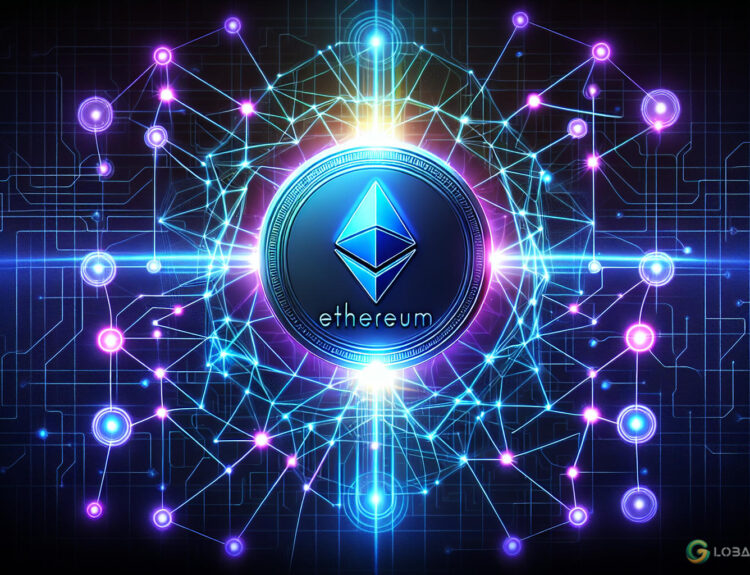Learn what is Ethereum and explore its components, including smart contracts, decentralized applications (dapps), and its native token Ether (ETH).
Ethereum is a decentralized software platform powered by blockchain technology. It facilitates trustless interactions and allows programmers to build decentralized applications (dapps) on top of its blockchain. Ethereum is the second-largest cryptocurrency by market capitalization after Bitcoin (BTC).
What is Ethereum?
Ethereum is a decentralized software platform that utilizes blockchain technology to enable trustless interactions. It is a network of computers globally that follow the Ethereum protocol, allowing developers to build dapps on its blockchain. Unlike Bitcoin, which was primarily created for financial transactions, Ethereum was designed to be a platform for decentralized applications. It has given rise to the decentralized finance (DeFi) space and enables payments using ETH.
Ethereum Basics
History of Ethereum
Ethereum was conceived in 2013 by Vitalik Buterin, who described it as a decentralized platform designed to run smart contracts. The first public version, Frontier, went live on July 30, 2015, funded through an initial coin offering (ICO) that raised over $18 million. Key contributors included Gavin Wood, Charles Hoskinson, Anthony Di Iorio, and Joseph Lubin.
Throughout its history, Ethereum has undergone several important hard forks:
- Byzantium (Oct. 16, 2017): Reduced mining rewards, delayed the difficulty bomb, and added cryptographic methods for L2 scaling.
- Constantinople (Feb. 28, 2019): Further reduced mining rewards and optimized gas costs.
- Istanbul (Dec. 8, 2019): Optimized gas costs, improved DoS attack resilience, and enabled Ethereum-Zcash interoperability.
- Beacon Chain Genesis (Dec. 1, 2020): Marked the beginning of Ethereum 2.0.
- Berlin (April 15, 2021): Optimized gas costs and increased support for multiple transaction types.
- London (Aug. 5, 2021): Introduced EIP-1559, reforming the transaction fee market.
- Paris (Sept. 15, 2022): Known as The Merge, transitioned Ethereum from proof-of-work to proof-of-stake.
- Shanghai-Capella (April 12, 2023): Enabled staking withdrawals and introduced automatic account sweeping for rewards.
- Cancun-Deneb (March 13, 2024): Introduced EIP-4844 to lower data storage costs for L2 rollups.
Ethereum vs. Bitcoin
While both use blockchain technology, Ethereum and Bitcoin were developed with distinct goals. Bitcoin serves as a digital alternative to fiat currencies, enabling peer-to-peer transactions without a centralized authority. It primarily acts as a store of value, often called ‘digital gold.’
Ethereum expands beyond financial transactions by introducing smart contracts, self-executing codes that facilitate transactions and agreements. Ether, its native cryptocurrency, functions as both a digital currency and ‘fuel’ for executing smart contracts. While Bitcoin uses proof-of-work, Ethereum has transitioned to proof-of-stake, which is more energy-efficient and allows for faster transaction processing.
Key Components
Ethereum boasts several vital components, including its native cryptocurrency, Ether; smart contracts; and decentralized applications (dapps). It also uses the Ethereum Virtual Machine (EVM) to execute scripts and support decentralized computing.
Ethereum Blockchain
The Ethereum blockchain is a distributed public ledger that records all transactions. It is maintained by a network of nodes that validate and execute transactions according to the Ethereum protocol. Each block contains a list of transactions, including value transfers, smart contract executions, and dapp deployments.
Ether (ETH)
Ether is the native cryptocurrency of the Ethereum network. It acts as the fuel for executing transactions and running applications on the platform. Users pay gas fees in ETH to incentivize validators and ensure network security. The amount of gas required depends on transaction complexity, with fees fluctuating based on network demand.
Smart Contracts
Smart contracts are self-executing contracts with terms directly written into code. They automatically enforce and execute terms when predefined conditions are met. These contracts run on the EVM, allowing developers to deploy complex dapps and automate transactions without intermediaries.
Decentralized Applications (dapps)
Dapps run on the Ethereum network, leveraging its decentralized architecture. Unlike traditional apps on centralized servers, dapps offer enhanced security, transparency, and resilience against censorship. Developers can build dapps for finance, gaming, supply chain management, and social networking, utilizing Ethereum’s smart contracts and decentralized infrastructure.
Ethereum 2.0
Ethereum 2.0 is a significant upgrade aimed at enhancing scalability, security, and sustainability. It introduced a shift from proof-of-work to proof-of-stake, making the network more energy-efficient and capable of handling increased transaction volumes. The Beacon Chain, launched in December 2020, introduced PoS to Ethereum. In September 2022, The Merge combined the Ethereum mainnet with the Beacon Chain, fully transitioning to PoS.
Use Cases of Ethereum
Ethereum underpins a peer-to-peer financial system accessible to everyone. Aside from facilitating payments, Ether has various use cases:
- Gas fees: Payments for transaction fees and computational resources.
- Powering decentralized applications: Facilitates staking, yield farming, and governance through voting.
- Investments: Earn interest by staking Ether and other Ethereum-based tokens on crypto-staking platforms.
Beyond transactions, Ethereum powers a thriving DeFi ecosystem, including lending, borrowing, trading, and earning interest without intermediaries. It is also a primary platform for non-fungible tokens (NFTs), representing ownership of digital assets like art and music. Other sectors, such as supply chain management and identity management, benefit from Ethereum’s transparency and security.
Future of Ethereum
As Ethereum evolves, its future appears promising. The transition to Ethereum 2.0 enhances scalability, security, and sustainability. The shift to proof-of-stake makes Ethereum more energy-efficient and capable of handling increased transaction volumes. This upgrade paves the way for a robust decentralized ecosystem, unlocking new possibilities for DeFi, NFTs, supply chain management, real-world asset tokenization, web3 gaming, and identity management.
Stay updated with the latest news and developments on Ethereum and other cryptocurrencies at Global Crypto News.
























